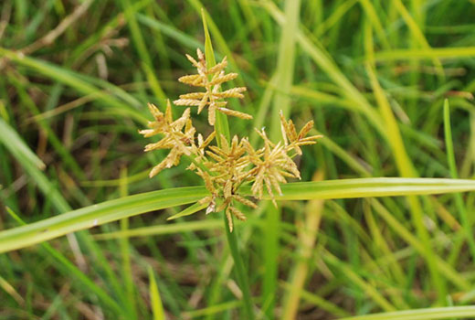Nutsedge

This grassy-looking weed is a sedge (hence the name) and is, unfortunately, very difficult to control on the home lawn as traditional lawn chemicals are ineffective against it. Yellow nutsedge is pale green to yellow with triangular stems and leaves that shoot off in three directions. This weed grows rapidly in the spring and early summer, and because of this, it will stick up above newly mowed grass just a couple of days after it has been mowed. Another factor that makes nutsedge difficult to control is that it produces numerous tubers that give rise to new weeds if disturbed. This means that, unlike many other weeds, we cannot pull nutsedge once to control it, as this activates the dormant tubers to grow new plants.
You can control nutsedge by pulling it, but it could take several seasons of persistence to see results.
There are chemical measures you can take to control nutsedge. The best time to spray this weed is to wait till it has reached three to eight leaves before spraying. This timing improves translocation to the tubers and rhizomes, resulting in better control. Only a few products on the market work for sedges, including Sledgehammer, Hi-Yield nutsedge, and horsetail control or products containing the active ingredient sulfentrazone. If you plan on spraying sedges, the first application should be done by June 21st; otherwise, dormant daughter tubers may be stimulated to grow.

Have questions? Contact our office where our Horticulture Extension Agent will assist you with questions.
Phone: (316) 321-9660
Email: callae@ksu.edu